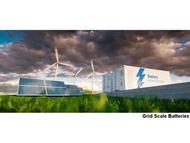Future Grid - ORIGINAL CONTENT
- By:
- Edward A. Reid Jr.
- Posted On:
- Jan 24, 2023 at 7:00 AM
- Category
- Energy Policy, Climate Change
"The Navy is a master plan designed by geniuses for execution by idiots." Herman Wouk, The Caine Mutiny
It currently appears that the Administration’s vision of the future US electric grid, supplied predominantly by intermittent renewables and supported by electricity storage, is a master fantasy designed by politicians for execution by geniuses with the unique talent of Rumpelstiltskin. There appears to be no plan to assure that the required number of geniuses will be available timely.
Wind and solar generation operate intermittently, and their output fluctuates continuously when they are operating. The grid is currently required to accept this intermittent, fluctuating output on a priority basis and to smooth the output and dispatch alternative sources of generation when the intermittent generator output declines or ceases as the result of time of day or weather conditions. This requirement imposes predictable but uncontrollable costs on the grid and on the conventional generation capacity which supplies the grid during periods of low/no intermittent generation.
As the grid expands in line with the Administration’s “all-electric everything” goal and the capacity of fossil-fueled conventional generation declines as the result of federal mandates and the unfavorable economics of reduced operating hours, there will be a growing need for increased electricity storage capacity and for “Dispatchable Emissions-Free Resources”(DEFR). Unfortunately, the long-duration storage which would be required to support the grid through multi-day renewable energy “droughts” is not currently available and the DEFR remain undefined.
One approach to long-duration storage is pumped hydroelectric facilities. These facilities require paired reservoirs separated by significant elevation differences. There are approximately 23 GW of pumped storage capacity in the US. This compares with a total US generating capacity of approximately 1,200 GW, of which approximately 140 GW is wind and 65 GW is solar renewable generating capacity. The move to “all-electric everything” over the next 28 years would require a rough tripling of US generating capacity, to approximately 3,600 GW, assuming no demand growth.
The conventional generating capacity which would be replaced by renewable generation plus storage consists of coal (~85% availability), Natural gas (~90% availability) and Nuclear (~95% availability). The renewable generation would consist of wind (~35% capacity factor times ~85% availability) and solar (~25% capacity factor times ~ 90% availability). Therefore, the rating plate capacity of the renewable generation required would be approximately four times the rating plate capacity of conventional generation capacity to serve the same grid demand, or approximately 14,000 GW.
The storage capacity required to support renewable generators during periods when they are not available to generate is the capacity of the generator times the maximum number of consecutive hours over which the renewable generation might be unavailable. The current US electricity storage capacity of 23 GW would be capable of replacing only one third of the current solar generating capacity. Assuming that storage capacity is all 8-hour storage (8 hr * 23 GW = 184 GWh), that storage capacity is the equivalent of replacing current US solar generating capacity for approximately 3 hours.
The ”all-electric everything” grid would require approximately 70 times current US renewable generating capacity and approximately 5,000 times current US electricity storage capacity.


